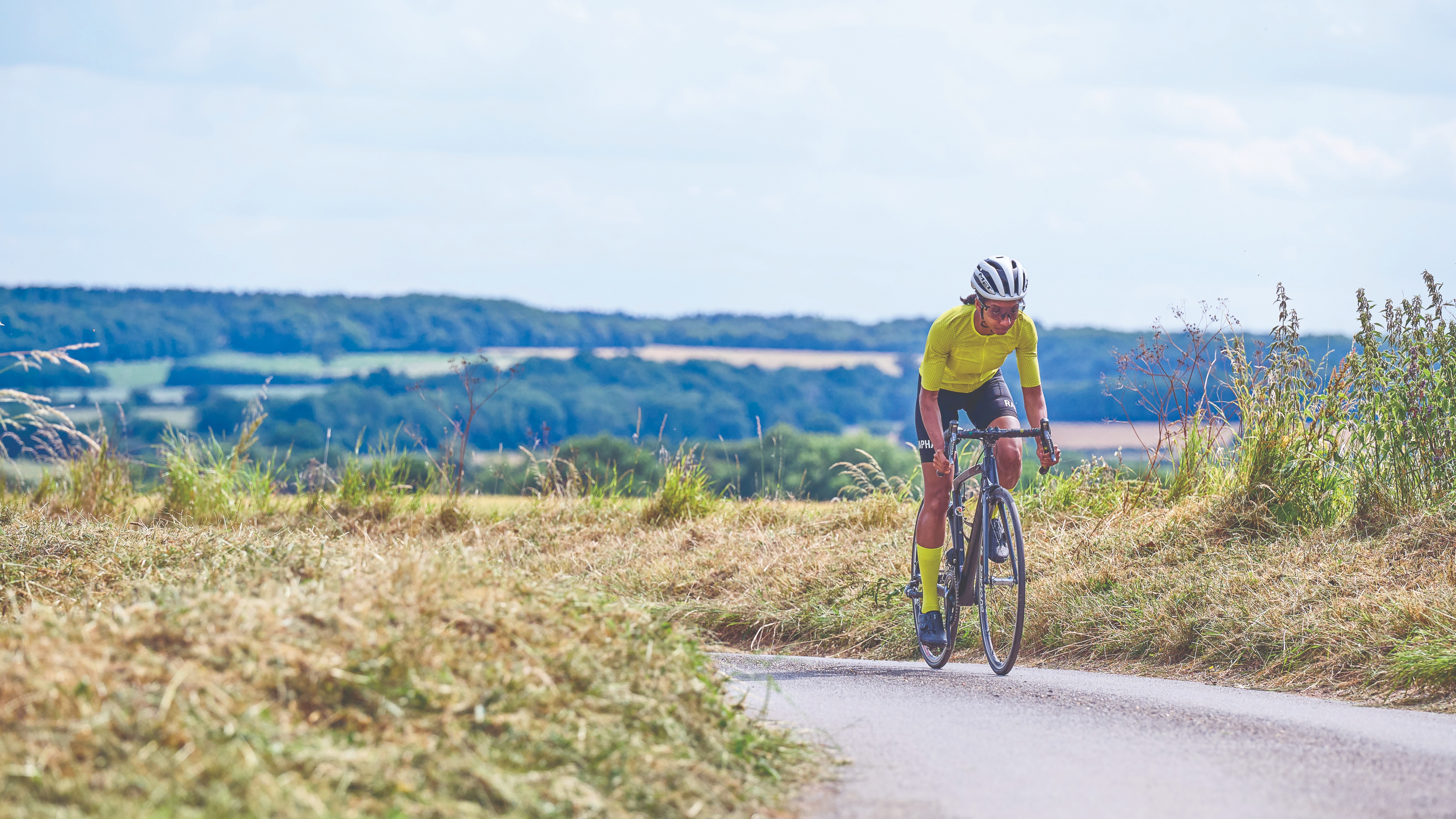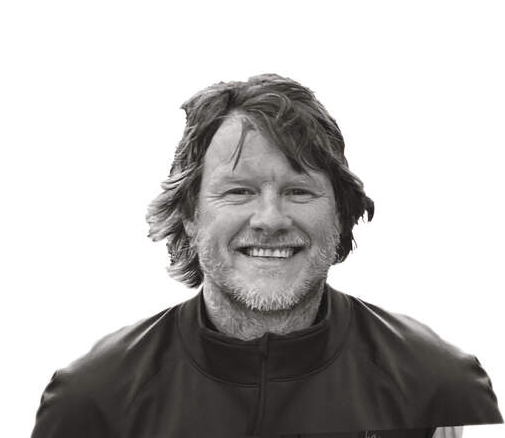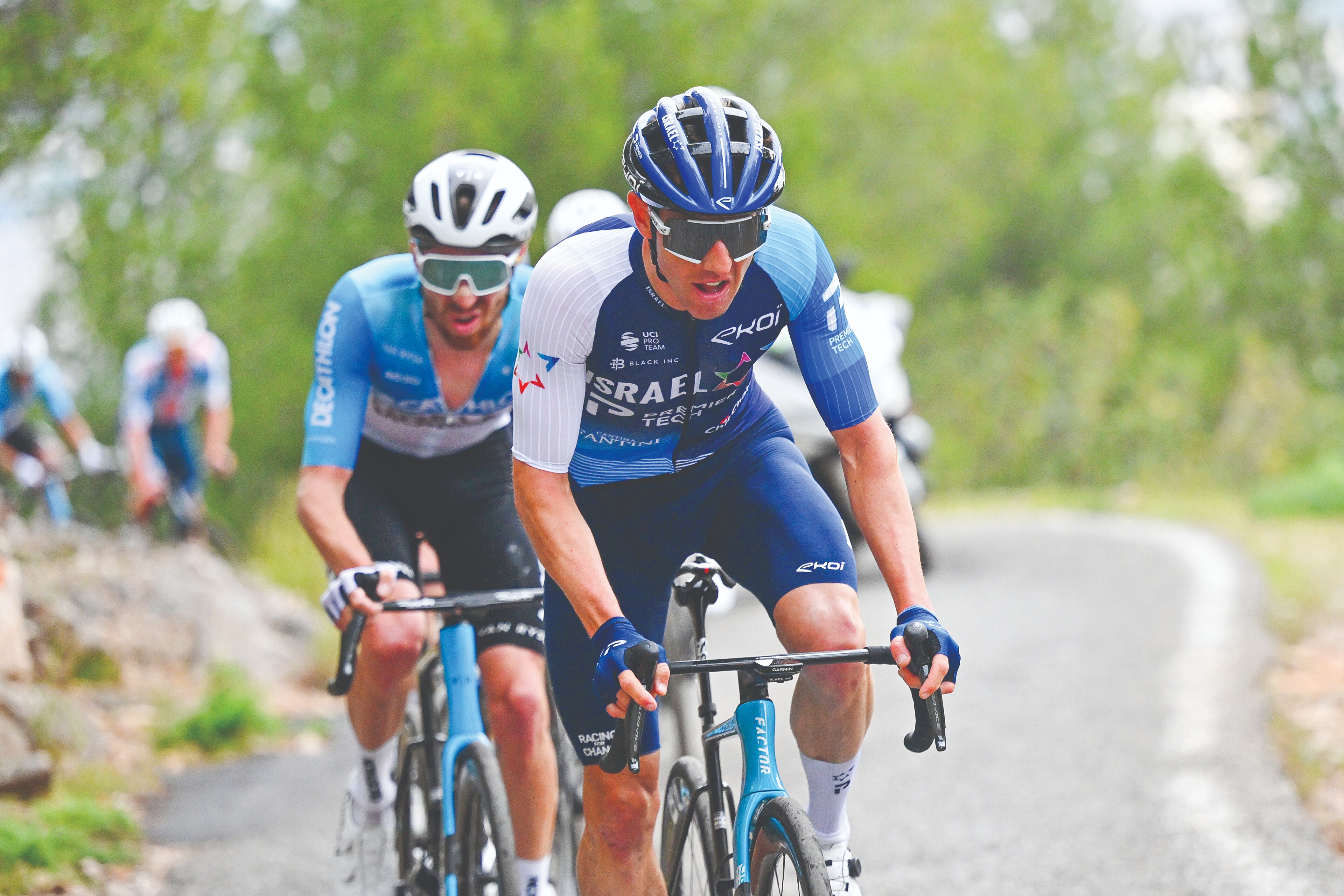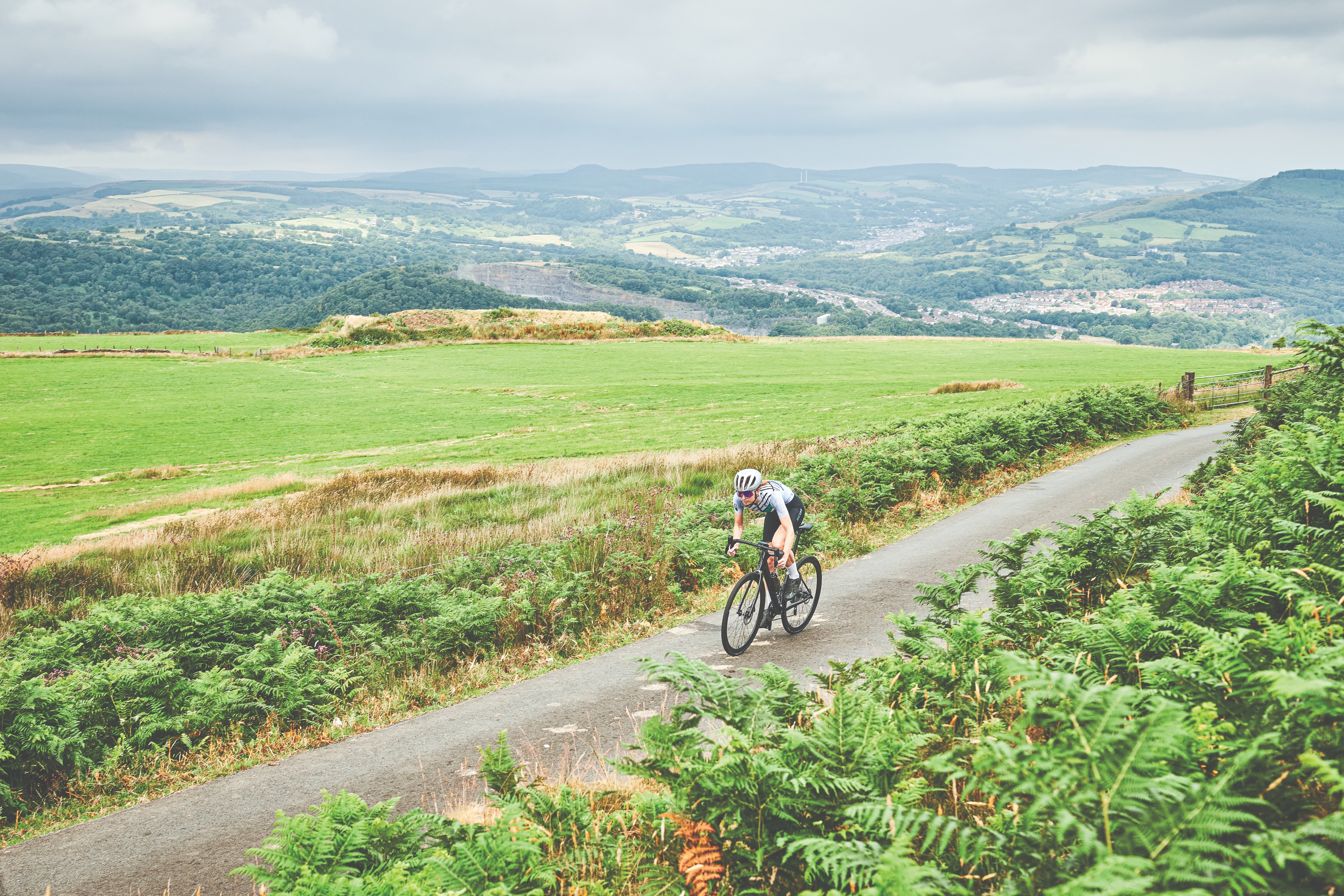'You can’t control heat, altitude and distance, but you can control what you say to yourself': 6 ways to think yourself faster
However flawless your physical preparation, the mind has a tendency to throw a spanner in the works come the big day. James Witts offers six ways to keep the brain onside with the body


Your thighs are burning, your calves are aching and your lower back is creaking like the proverbial rusty gate – don’t you just love what cycling does to your body? Or should we say, your mind? Where do you actually feel that pain? It might stem from your peripheral nerves but it’s your brain that interprets and reacts. As many of you will know from the psychological arc endured on long days in the saddle, cycling success – be it completing or competing – is as much about what happens up top as it is about what happens below.
The mysterious nature of pain affects all cyclists across the board, from the apprehensive commuter heading out into the rain, to the elite racer seeking Tour de France glory. It’s why, for this feature, we’ve tapped into the mental resources of those in the know, from a WorldTour rider to world-class sports psychologist, to reveal the psychological strategies you can use to help deliver peak physical performance.
Segment for success

Michael Woods knows the importance of ‘chunking’
Michael Woods races for IsraelPremierTech, with stage victories at the Tour de France and Vuelta a España on his palmarès. The secret to his success? Don’t look too far ahead. “The mental fatigue component in races, especially the Classics, is underrated,” Woods says. “That’s why it’s so important to break them down. I can’t start the race thinking, ‘Oh man, I’ve got 250km left.’ It would ruin me.”
Woods’s deconstruction is known as ‘chunking’. “Essentially, this is breaking down your ride and challenge into smaller segments,” says Noel Brick, lecturer in sports and exercise psychology at Ulster University. Brick is also a top-notch ultra runner whose services I drew on for my book Riding with the Rocketmen. “If you start thinking about how you might feel after two hours of riding, that brings stress and wastes energy. It’s about keeping in the here and now.”
This segmenting might cover the whole ride or tough sections. “When it comes to a brutal climb like Alpe d’Huez, for instance, use those 21 hairpins to your advantage,” Brick says. “One strategy is counting up to halfway, so one down, two down… and then counting down from halfway, so 10 to go, nine to go. Doing it that way gives you more of a lift.” In short, from little acorns, mighty oak trees grow.
Knowledge is power
Course recon software VeloViewer is used by every men’s and women’s team on the WorldTour. The granularity of routes is immense but also vivid thanks to 3D charts. It’s a modern-day roadbook for elite and recreational riders alike, which – even more effectively than Google Maps – helps you to paint a vivid picture of your upcoming ride. Spot a break in a hedgerow on an exposed country road? That could mean sidewinds so prepare yourself. A roundabout near the end of a fast section? Ensure you’re looking well ahead and ready for the brakes. A good course recce is about controlling the controllables to build confidence.
Course research is vital for all levels of rider in an effort to unleash peak performance. If your budget and time allows, don’t limit yourself to desk prep. “I like to see courses that I don’t know, as it helps in the process of building a plan and making decisions under pressure in those races,” says Matthew White, sporting manager at Jayco-Alula men’s team. “You can take riders with you, too. Some like riding the whole course, others just a section. Being there is also a chance to test out pacing and nutrition strategies, plus you can play around with gear options.”
Get The Leadout Newsletter
The latest race content, interviews, features, reviews and expert buying guides, direct to your inbox!
Also note that if you’re a fan of indoor cycling, you’ll find many ‘real’ routes to ride via the likes of Zwif, Rouvy et al. Have a peruse and if your goal event is on there and you have the necessary gear to tap into the virtual ride, do it.
Visualise to actualise
Visualisation, or mental imagery, is a psychological tool used by elite cyclists to bolster their mindset for an upcoming race. The idea is that by ‘feeling’ the upcoming challenge, you gradually etch a more detailed and accurate parcours in your brain so that, in the event, your mind is ready to unleash your body for optimum output. Woods is a fan, as are many riders, including Mark Cavendish. “There are two ways you can use mental imagery,” says Brick. “There’s the traditional way that involves sitting at home or lying down with your eyes closed and imagining yourself in the specific scenario. And that specificity is important as you want to run through the ride in real time, so focus on important parts, like technical descents, as running through a 100-mile ride in your mind’s eye would be both exhausting and unrealistic.
“You can also use mental imagery during your training rides by picturing yourself sprinting to the next group of riders or the next road sign. We use these little scenarios in our minds all the time to keep ourselves motivated. Your imagination is a powerful tool.”
If you’re sceptical and feel this is all a little ‘earthy’, neuroscience provides empirical evidence that visualisation works. The only part of the circuity not activated is the final output to the muscle. So, how often should you visualise? Regular and short is best. If you can muster three to five times a week of 10 to 15 minutes running through your mental parcours videotape, you’ll enjoy greater benefits come your main ride.
Talk yourself stronger

If you’re riding alone, keep the self-talk upbeat
In Haruki Murakami’s What I Talk About When I Talk About Running, the Japanese writer charts his journey from training to the finish line of his first ultra-marathon. He recalls how internal dialogue projected him to his goals. And science says Murakami is onto something.
Self-talk is a proven strategy that Brick has researched in many studies. “You can’t control things like heat, altitude and distance,” he says. “But you can control what you say to yourself. It’s about reframing the situation for a positive outcome. For instance, if someone goes up the road, you might start questioning yourself: ‘Am I slow? Am I near the back?’ It’s not healthy. Instead, tell yourself, ‘Stick to a certain tempo, heart rate or wattage. I’ve trained at that and that’ll work for me.’”
Cycling can be incredibly liberating. It can also be a mental battle, especially if you’re riding solo. Negative thoughts can invade your head with the ferocity of a Jasper Philipsen sprint, creating a snowball of damaging emotions. Self-talk is about taking back control of your inner dialogue. And that’s important because studies have shown that a little chat-to-self reduces levels of the stress hormone cortisol, which can cut power output and impair decision-making.
Just remember self-talk works when positive, so ‘This is a challenge but I can conquer this’ rather than ‘This will kill me, how can I overcome this…?’ And note that self-talk can be a silent monologue or shouted from the mountaintops. Whatever works for you – just pay due respect to the sensibilities of your mates!
Declutter your pacing
Brick's quick tips
Three psychological cycling takeaways from sports psychologist Noel Brick.
POSITIVE MARKER
Write down on your water bottle a positive statement that resonates with you. Are you riding for charity? A bucket list event? Losing weight? Whatever it is, write a little mantra that motivates you on your bottle. Or write your cycling goals on a Post-It on the fridge door. Seeing it should keep you on track.
THREE IS THE MAGIC NUMBER
As your race edges closer, focus on three key areas to give you confi dence. It could be a specific ride or more general preparation. We sometimes detach preparation from confidence. We’ve done all this prep but are nervous. Anchor confi dence from specifi c things you’ve done. Eating well, fewer pints on a Friday, strength work. Take confi dence from what you’ve done. Fear not about what you’ve not done.
TREAT YOURSELF
When riding, have a treat. This might sound crazy but I use a lot of gels when ultra-running but I also take Skittles. Every so often, I’ll treat myself to one or two. It’s amazing how much you look forward to the next Skittle! It reminds you of the process and part of that process is getting nutrition onboard. And event the best energy gels can become monotonous.
Research has shown that high-performers not only acutely prep their mind before a challenge but also respond less emotionally than recreational riders. In cognitive terms, this is referred to as ‘proactive control’ and is about clearing out clutter by applying a non-judgmental viewpoint to the task at hand.
Brick’s work has shown that cutting clutter has a positive impact on performance. In a study, he had 20 runners complete several time trials, each following a different pacing strategy while permitted to increase or decrease treadmill speed at will – self-controlled – though always as fast as possible. The experiment also involved external pacing where Brick controlled the pace of the treadmill. Afterwards, the subjects were interviewed to rate how frequently they focused on thoughts from attentional focus categories, and asked to recall specific thoughts.
When self-controlled, almost all of the subjects focused on pacing, the distance display and chunking (see point 1). When externally controlled, the majority focused on relaxing, and improving both technique and cadence. This thoughtful diversion saw the externally controlled group exhibit a 2% lower heart rate than the self-controlled group for the same results. “Our research showed that too much self-monitoring is associated with an increase in effort perception and a reduction in economy,” explains Brick. One explanation is a reduction in ‘central regulation’ – being freed from thinking about pacing means less brain activity, more energy spared and greater physical force. However, as we’ve seen with selftalk, this doesn’t mean you should let your mind drift off completely.
“It’s good to check your technique every 20 minutes,” says Brick. “You should also cycle regularly with friends who are of similar ability, as that’ll let pacing take care of itself. You can practise deep breathing, too, from the diaphragm rather than the top of the lungs. This relaxes you, leading to a reduced perception of effort and potential to train and race harder.”
Make a peril-free plan
The power of training early
Performance psychologist Simon Marshall on why morning rides are more fruitful than evening outings
When it comes to self-control, early mornings are almost always better for exercise. Neuroscientists and cognitive psychologists have discovered that most of us find it harder to take on a challenge later in the day. It’s because the part of your brain responsible for self-control (the anterior cingulate cortex) tires just like a muscle. Your emotional reserves to tackle a challenge and tolerate discomfort are eroded throughout the day because you’re constantly resisting temptation, stifling emotion and otherwise exerting self-restraint. Often you don’t realise you’re doing it.
When evening arrives, most of us have simply become too tired to put up a fight. We default to the easiest option. This is why thinking about the large glass of wine at home becomes much more appealing than a high-intensity Zwift session. If you’re lucky enough to have a choice, go for a ride when your anterior cingulate cortex is at its best: in the morning.
When it comes to your goal event, the aim should be to peak psychologically as well as physiologically. Make sure you’re well rested mentally as well as physically. Th at means having a clear pre-event plan, from when you’ll register, to when you’ll check your tyres. How will you transfer from the airport to your hotel? When will you check the state of your bike after getting off your flight? Th is saves the brain drain.
This applies right down to your pre-event evening meal. While writing my book, my goal event was the 2022 Etape du Tour, which included the Galibier, Croix de Fer and Alpe d’Huez. Winner of the 1988 Giro Andy Hampsten told me that his win was payback for what had happened three years earlier when his entire team went down with food poisoning.
“We had this frozen lasagne and it was still cold in the middle,” he said. “The place we ate in probably just served sandwiches normally, but they had to feed 20 people on the 7-Eleven team, plus media. Eric Heiden, a commentator for CBS, was with us. [The next day] he went through his lines and chucked up all over the other presenter’s shoes.”
After Hampsten’s warning, I promised myself I wouldn’t eat cheese the night before the Etape, but I forgot to book a restaurant and ordered a takeaway pizza. The inevitable happened: I was up all night and the scene in the bathroom wasn’t pretty. Lesson learned.

Thank you for reading 20 articles this month* Join now for unlimited access
Enjoy your first month for just £1 / $1 / €1
*Read 5 free articles per month without a subscription

Join now for unlimited access
Try first month for just £1 / $1 / €1
James Witts is a Somerset-based cycling writer, keen amateur cyclist and author of Riding with the Rocketmen (Bloomsbury, £14.99)
-
 Can you make a living as an American domestic road racer? A look inside the part-time professionalism of the American road peloton
Can you make a living as an American domestic road racer? A look inside the part-time professionalism of the American road pelotonAfter decades of booms and busts, the American road scene finds itself in a fragile place. We spoke to riders to understand the reality of chasing the dream on home soil
By Logan Jones-Wilkins
-
 5 things I wish I’d known before reviewing the Swytch GO e-bike conversion kit
5 things I wish I’d known before reviewing the Swytch GO e-bike conversion kitSwytch offers an effective, albeit untidy, workaround for e–bike–curious riders. But as prices drop on full e-bikes, its value proposition may be fading
By Anne-Marije Rook